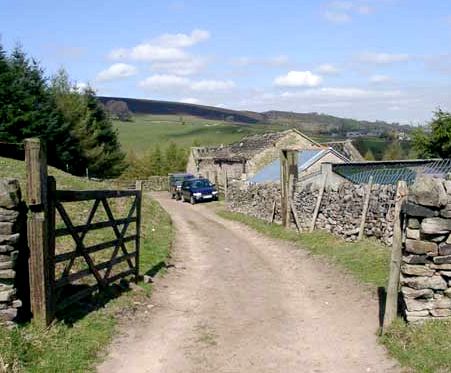Rural estates boost
Agricultural income has made a significant contribution to the profitability of rural estates, according to a new survey


Income from agriculture made a significant contribution to the profitability of rural estates, says a new survey. At £55 per acre, this was the highest annual contribution made by agriculture since the Savills 2008 Estate Benchmarking Survey was first published in 1996. This promising figure has stopped the reduction in the proportion of gross income that agriculture contributes to the average estate’s gross income. However, residential income only accounted for just over a third of total gross income, while leisure showed a 25% increase. In addition, net income for rural estates rose by 11% during the 2008 survey year to over £96 an acre. The study shows that a tight grip on costs paid dividends for the estates surveyed, with total expenditure way below inflation at just 1.9%, far less than the annualised increase of 4.3% recorded over the past three years. The survey also reveals that Agricultural Holdings Act tenancy rents (AHA) on all estates went up by 13% during the year to an average of £66 an acre. Farm Business Tenancy (FBTs) rents climbed to £75 an acre and now account for nearly 32% of total let land. Income from residential Assured Shorthold Tenancies (ASTs) rose by 5% to an average £7,213 per dwelling. Rents for both office and retail space on the commercial side also increased by 5%, but let industrial rents fell by -1.2% to an average of £3.86 an acre. Agriculture recorded very large returns on capital of 32.4% due to strong capital growth of let agricultural land, compared to 19.3% in 2007 and only 9.5% in 2006. This sound performance of agricultural land had a direct effect on the total return of all property, which increased by 4.8%. Hit by the downturn in the UK property market, both residential and commercial returns dropped by -10.4% and -4.2% to average 4.5% and 12% respectively. The report points out that estates will have to innovative and where appropriate, diversify and challenge existing practices. ‘As the value of estates has increased considerably over the last year on the back of increased land and farm rental values, we are seeing considerable reinvestment by owners into the let agricultural sector. ‘After many years of investment into the residential and commercial sectors that have been performing well, owners now have reason to be increasingly positive about the long-term agricultural prospects on their estate,’ says Mike Pennington, chair of the Savills’ benchmarking group.
Sign up for the Country Life Newsletter
Exquisite houses, the beauty of Nature, and how to get the most from your life, straight to your inbox.
Country Life is unlike any other magazine: the only glossy weekly on the newsstand and the only magazine that has been guest-edited by HRH The King not once, but twice. It is a celebration of modern rural life and all its diverse joys and pleasures — that was first published in Queen Victoria's Diamond Jubilee year. Our eclectic mixture of witty and informative content — from the most up-to-date property news and commentary and a coveted glimpse inside some of the UK's best houses and gardens, to gardening, the arts and interior design, written by experts in their field — still cannot be found in print or online, anywhere else.
-
 The century-old enamelling technique used to create Van Cleef's lucky ladybird brooch — which has something in common with Country Life
The century-old enamelling technique used to create Van Cleef's lucky ladybird brooch — which has something in common with Country LifeThe technique used in the jeweller's Geneva workshop has been put to good use in its latest creation.
By Hetty Lintell Published
-
 ‘The best sleep in the sky’: What it’s like to fly in United’s Polaris cabin, approved by American icon Martha Stewart
‘The best sleep in the sky’: What it’s like to fly in United’s Polaris cabin, approved by American icon Martha StewartUnited’s Business Class cabin goes by the name Polaris and Martha Stewart is a fan. So, how does it fare?
By Rosie Paterson Published

